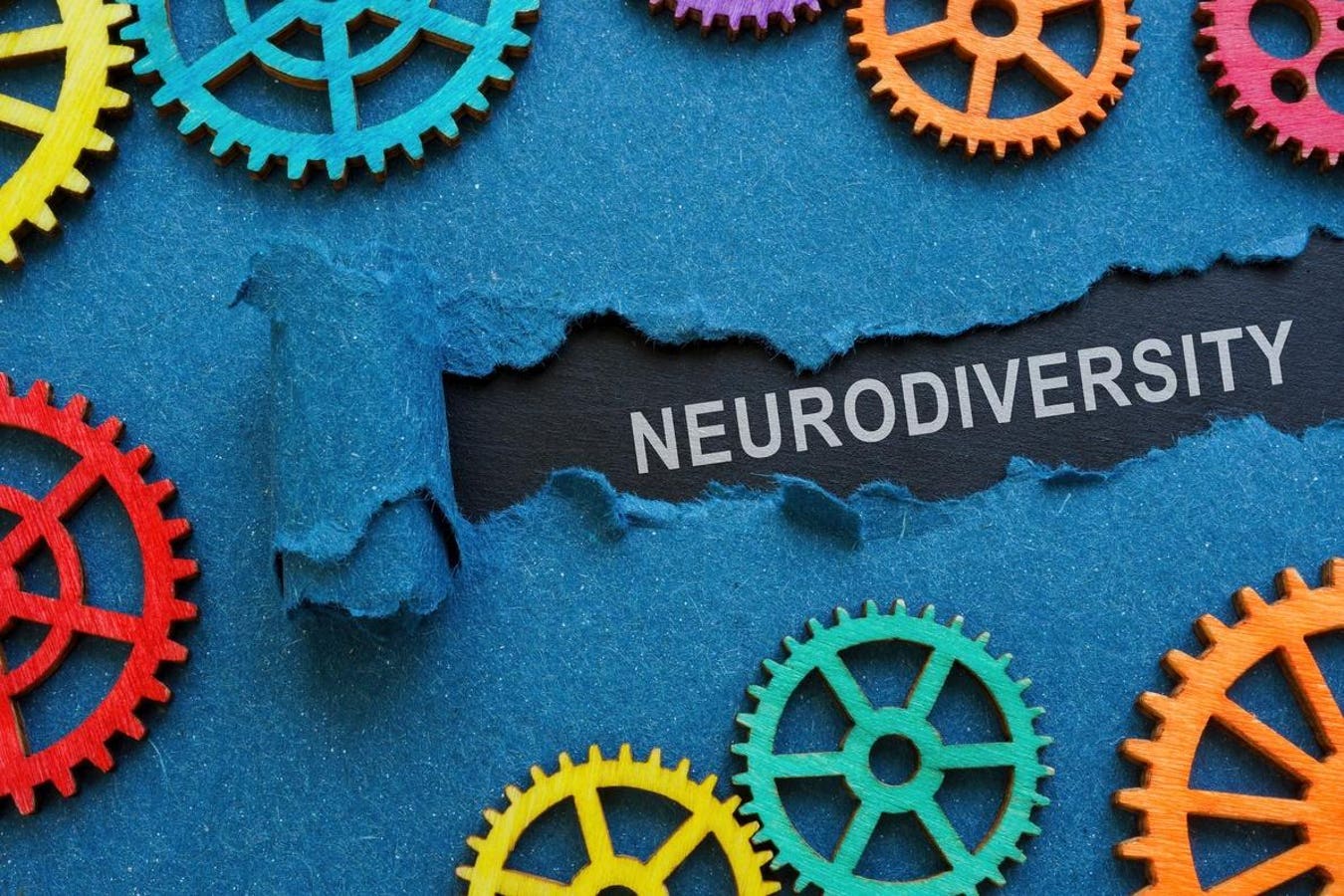Diversity and Inclusion (DEIA)
The Power of Belonging: Why Feeling Accepted Matters in the Workplace

Belonging in organizations is a fundamental human need, and it plays a crucial role in an individual’s overall well-being and job satisfaction. When employees feel like they belong, they are more likely to be engaged, motivated, and committed to their work. In this article, we’ll explore the importance of belonging in the workplace and how it can lead to increased productivity, better teamwork, and a more positive work environment.
The Importance of Belonging
Belonging is a fundamental human need, and it’s essential for our emotional and psychological well-being. When we feel like we belong, we experience a sense of security, trust, and acceptance, which can lead to increased job satisfaction and reduced stress. On the other hand, when we don’t feel like we belong, we may experience feelings of isolation, anxiety, and depression.
Types of Belonging
There are several types of belonging, including:
Tribal Belonging
Tribal belonging refers to the sense of belonging we experience when we’re part of a group or team. This type of belonging is often characterized by a sense of loyalty, commitment, and shared values. When we feel like we belong to a tribe, we’re more likely to be motivated, inspired, and committed to our work.
Personal Belonging
Personal belonging refers to the sense of belonging we experience when we’re accepted and valued as individuals. This type of belonging is often characterized by a sense of autonomy, self-expression, and self-acceptance. When we feel like we belong as individuals, we’re more likely to be confident, creative, and innovative.
Organizational Belonging
Organizational belonging refers to the sense of belonging we experience when we’re part of an organization or company. This type of belonging is often characterized by a sense of purpose, meaning, and shared values. When we feel like we belong to an organization, we’re more likely to be engaged, motivated, and committed to our work.
The Benefits of Belonging
Belonging has several benefits, including:
Increased Job Satisfaction
When we feel like we belong, we’re more likely to be satisfied with our jobs. We’re more likely to enjoy our work, feel a sense of purpose, and be motivated to do our best.
Improved Teamwork
When we feel like we belong, we’re more likely to work well with others. We’re more likely to be collaborative, communicative, and supportive, which can lead to increased productivity and better outcomes.
Reduced Stress
When we feel like we belong, we’re less likely to experience stress and anxiety. We’re more likely to feel a sense of security, trust, and acceptance, which can lead to a more positive and healthy work environment.
Strategies for Fostering Belonging
There are several strategies for fostering belonging, including:
Build a Positive Work Culture
A positive work culture is essential for fostering a sense of belonging. This can be achieved by promoting open communication, empathy, and understanding. It’s also important to recognize and reward good behavior, such as teamwork, collaboration, and innovation.
Foster Inclusion and Diversity
Inclusion and diversity are essential for fostering a sense of belonging. This can be achieved by promoting equal opportunities, addressing bias, and celebrating differences. It’s also important to provide training and resources for managers and employees to help them understand and appreciate different perspectives.
Encourage Feedback and Communication
Feedback and communication are essential for fostering a sense of belonging. This can be achieved by providing regular feedback, holding open discussions, and encouraging collaboration and communication. It’s also important to listen actively and respond empathetically to employee concerns and ideas.
Conclusion
In conclusion, belonging is a fundamental human need that’s essential for our emotional and psychological well-being. When we feel like we belong, we’re more likely to be engaged, motivated, and committed to our work. By understanding the importance of belonging, organizations can take steps to foster a positive work culture, promote inclusion and diversity, and encourage feedback and communication. This can lead to increased job satisfaction, improved teamwork, and reduced stress, resulting in a more positive and healthy work environment.
FAQs
Q: What is belonging in the workplace?
A: Belonging in the workplace refers to the sense of connection and acceptance that employees experience when they feel like they’re part of a team, organization, or community.
Q: Why is belonging important in the workplace?
A: Belonging is important in the workplace because it can lead to increased job satisfaction, improved teamwork, and reduced stress. It’s also essential for our emotional and psychological well-being.
Q: How can organizations foster a sense of belonging?
A: Organizations can foster a sense of belonging by promoting a positive work culture, fostering inclusion and diversity, and encouraging feedback and communication. They can also provide training and resources to help employees understand and appreciate different perspectives.
Q: What are the benefits of belonging in the workplace?
A: The benefits of belonging in the workplace include increased job satisfaction, improved teamwork, and reduced stress. It can also lead to increased productivity, better outcomes, and a more positive work environment.
Q: How can employees foster a sense of belonging?
A: Employees can foster a sense of belonging by being open-minded, empathetic, and understanding. They can also take the initiative to build relationships, participate in team-building activities, and engage in open communication and feedback.
Diversity and Inclusion (DEIA)
Brands Beware

Introduction to Hispanic Homeownership in America
A recent report released by the National Association of Hispanic Real Estate Professionals sheds light on the state of Hispanic homeownership in America in 2024. Drawing from both publicly available data and insights from real estate practitioners within the NAHREP network, the report aims to tell the evolving story of Hispanic homeownership. It highlights key trends in homeownership growth, including barriers, opportunities, and cultural nuances influencing Hispanic consumers. These insights help shape NAHREP’s policy priorities for legislative and administrative actions, while guiding industry efforts to reduce barriers and expand homeownership opportunities.
Current State of Hispanic Homeownership
Despite rising home prices and high interest rates, the number of Hispanic homeowners in the U.S. reached a record 9,781,000 in 2024—representing 49% of all Hispanic households. Although this figure is slightly below the 49.5% reported in 2023, it reflects a net gain of 238,000 new Hispanic homeowners over the past year. These 238,000 new homeowners accounted for 35% of the nation’s total net growth in homeownership, a disproportionately high share compared to the overall Hispanic population, which makes up approximately 15% of U.S. households. This means Hispanics are punching above their weight in driving homeownership growth.
The Role of Non-White Households
Despite accounting for only 36% of total households, non-white households represented 82% of all new household formations in the United States. This indicates the increasing importance of multicultural segments in shaping the future housing market. One particularly striking data point is that Hispanics formed 676,000 households in 2024, accounting for 43% of all new household formations in the country. However, many of these households opted to rent instead, which contributed to the slight dip in the Hispanic homeownership rate from 49.5% to 49%.
Growth in Hispanic Homeownership
The growth in Hispanic homeownership over the past decade has been remarkable. In 2014, only 6,864,000 Hispanic households owned a home. By 2024, that number had increased by nearly 3 million—a 42% increase in just ten years. According to the report, this sustained growth is driven by several factors: greater mobility to relocate to more affordable regions, innovative financing solutions, and a strong cultural commitment to achieving the American Dream.
Demographic Characteristics
With a median age of 31, Hispanics are young compared to the general population, and 43% of Hispanic homebuyers in 2024 were under 45 years old. By comparison, only 38% of non-Hispanic homebuyers are under the age of 45. Nearly half of Hispanic heads of households belong to the Millennial or Gen Z generations.
Geographic Trends
Geographically, Texas continues its long-standing trend as the state with the largest increase in Hispanic homeowners. Interestingly, less traditional markets like St. Louis, Pittsburgh, and Wichita have also emerged as popular destinations due to more affordable housing options and lower costs of living.
Economic Influence and Ripple Effect
The report emphasizes that the economic influence of the U.S. Hispanic population is growing faster than its size. As the country faces economic uncertainty and potential recession, the Hispanic consumer segment stands out as a critical driver of sustainable business growth. Moreover, the ripple effect of increasing Hispanic homeownership extends beyond the real estate sector. It fuels growth across industries such as financial services (mortgages and insurance), construction and building materials, home improvement, appliances, furniture and décor, legal and professional services, utilities, moving and storage, technology, and smart home devices.
Call to Action
Gary Acosta, co-founder and CEO of NAHREP, states, “Despite record high prices, tight inventory, and rising interest rates, the resilience and determination of Hispanics have led to record levels in homeownership and household formation. But this progress is not guaranteed. We must address the affordability crisis and remove systemic barriers to ensure that every Latino family has a fair shot at achieving the American Dream.” The findings from the 2024 NAHREP report present a clear and urgent call to action for advertisers: the U.S. Hispanic segment is not just growing—it is driving the future of homeownership and household formation in America.
Conclusion
With nearly 10 million Hispanic homeowners and a youthful, upwardly mobile population forming households at record rates, this demographic represents one of the most powerful and untapped engines of economic growth. Brands that recognize this moment and strategically invest in culturally relevant, data-informed marketing will be best positioned to earn the trust and loyalty of this influential audience. The time to act is now. As the Hispanic consumer base continues to expand in size, wealth, and influence, those who delay will fall behind. This is more than a market trend—it’s a defining opportunity for brands to align with the values, aspirations, and economic power of the next generation of American consumers.
FAQs
- Q: What was the number of Hispanic homeowners in the U.S. in 2024?
A: The number of Hispanic homeowners in the U.S. reached a record 9,781,000 in 2024. - Q: What percentage of all new household formations in the country did Hispanics account for in 2024?
A: Hispanics accounted for 43% of all new household formations in the country in 2024. - Q: What is driving the sustained growth in Hispanic homeownership?
A: The sustained growth is driven by several factors including greater mobility to relocate to more affordable regions, innovative financing solutions, and a strong cultural commitment to achieving the American Dream. - Q: What is the median age of Hispanics compared to the general population?
A: With a median age of 31, Hispanics are young compared to the general population. - Q: Why is the Hispanic consumer segment important for economic growth?
A: The Hispanic consumer segment is critical for sustainable business growth as its economic influence is growing faster than its size, making it a driver of economic growth amidst economic uncertainty.
Diversity and Inclusion (DEIA)
Florida Attorney General Restricts Engagement with Law Firms Embracing DEI Policies

In a significant policy shift, Florida Attorney General James Uthmeier has announced that his office will no longer engage with private law firms that implement Diversity, Equity, and Inclusion (DEI) initiatives. This decision underscores a growing debate over the role of DEI practices within professional services and their alignment with legal and ethical standards.
Policy Overview
Attorney General Uthmeier expressed deep concern over what he perceives as discriminatory practices associated with DEI programs in many law firms. In a recent policy memorandum, he emphasized the importance of adhering to the rule of law and ensuring equal justice, stating that DEI and Environmental, Social, and Governance (ESG) practices undermine these foundational principles.
Effective immediately, the Attorney General’s Office will cease collaborations with law firms that engage in what it deems as illegal and inappropriate discrimination and bias. Uthmeier highlighted that racial discrimination, irrespective of its form, is both wrong and unlawful, asserting that Florida’s taxpayer resources should not support firms that engage in such practices.
Implications for Law Firms
The policy specifically targets law firms involved in various DEI programs, including:
-
Mansfield Certification, which mandates diversity in leadership roles.
-
Minority diversity scorecards.
-
Racial diversity targets in hiring, promotions, and contracting.
Firms with a history of such practices will be prohibited from collaborating with the state unless they can demonstrate significant changes. The Attorney General’s Office will conduct a comprehensive review of existing engagements to assess compliance with this new policy.
Broader Context
This move aligns with broader efforts at both state and federal levels to scrutinize and, in some cases, dismantle DEI initiatives within public institutions and government contracts. Critics of DEI programs argue that they may inadvertently promote discriminatory practices by prioritizing certain groups over others, potentially leading to reverse discrimination. Supporters, however, contend that DEI initiatives are essential for fostering inclusive environments and addressing historical inequities.
The policy change is expected to have significant ramifications for law firms operating in Florida, prompting them to reevaluate their internal policies and practices to ensure alignment with the state’s directives.
Conclusion
Florida’s recent policy shift reflects an ongoing national conversation about the balance between promoting diversity and adhering to principles of equal treatment under the law. As this debate continues, organizations and legal professionals will need to navigate these complex issues carefully, ensuring that their practices comply with evolving legal standards and societal expectations.
Diversity and Inclusion (DEIA)
Is Neurodiversity Under Attack? Yes. Here’s Why

Widespread Resistance To DEI
There can’t be diversity without neurodiversity. Diversity of thought can make or break a team at work. We need diversity of thought in order to thrive as professionals and as a society. Companies like Target, Amazon, and Google are rolling back DEI programs, which means the importance of neurodiversity is no longer being spoken about at many prominent companies.
Workplace Discrimination
Revealing that you are neurodivergent can be a risk when it comes to the workplace. Some colleagues may respond with discrimination or bullying. The fear of dealing with workplace discrimination keeps many neurodivergent people from revealing their diagnoses, also known as masking. Remember that neurodiversity was a hot topic just a few years ago, but with recent changes in the country’s leadership, who knows what will happen to discussions surrounding neurodiversity in the workplace.
Stigma Results In Masking
I believe that stigma plays a major role in why neurodiversity is under attack. So many disorders are made light of and misunderstood. I urge readers to consider whether they expect colleagues to mask their neurodivergence. Do you allow space for conversations about neurodiversity at work? Do you encourage diversity of thought or simply remain quiet when it comes time to defend DEI? These are questions working professionals should be asking themselves, especially those who work at companies that have scaled back on or ended DEI initiatives.
Conclusion
Neurodivergent people deserve to be seen and heard in the workplace. But with recent pushback against DEI, it feels as though neurodiversity has been put to the wayside. I urge readers to continue advocating for neurodiversity and to refuse to be silenced. Keep speaking out, keep posting, and keep joining communities of neurodivergent people. Neurodiversity is not going away, and it’s time for it to be celebrated everywhere.
FAQs
Q: What can I do to support neurodivergent individuals in the workplace?
A: Encourage open conversations about neurodiversity, provide a safe and inclusive environment, and advocate for DEI initiatives.
Q: Why is neurodiversity important in the workplace?
A: Neurodiversity brings diversity of thought, which is essential for innovation and success. It also helps to create a more inclusive and accepting work environment.
Q: How can I, as an individual, make a difference in promoting neurodiversity?
A: By speaking out, sharing your own experiences, and advocating for DEI initiatives, you can make a significant impact.
-

 Career Advice4 months ago
Career Advice4 months agoInterview with Dr. Kristy K. Taylor, WORxK Global News Magazine Founder
-

 Diversity and Inclusion (DEIA)4 months ago
Diversity and Inclusion (DEIA)4 months agoSarah Herrlinger Talks AirPods Pro Hearing Aid
-

 Career Advice4 months ago
Career Advice4 months agoNetWork Your Way to Success: Top Tips for Maximizing Your Professional Network
-

 Changemaker Interviews3 months ago
Changemaker Interviews3 months agoUnlocking Human Potential: Kim Groshek’s Journey to Transforming Leadership and Stress Resilience
-

 Global Trends and Politics4 months ago
Global Trends and Politics4 months agoHealth-care stocks fall after Warren PBM bill, Brian Thompson shooting
-

 Global Trends and Politics4 months ago
Global Trends and Politics4 months agoUnionization Goes Mainstream: How the Changing Workforce is Driving Demand for Collective Bargaining
-

 Training and Development4 months ago
Training and Development4 months agoLevel Up: How Upskilling Can Help You Stay Ahead of the Curve in a Rapidly Changing Industry
-

 Changemaker Interviews4 weeks ago
Changemaker Interviews4 weeks agoGlenda Benevides: Creating Global Impact Through Music


![Laying the Foundation for Long-Term Success: [Company]’s Values-Based Leadership Laying the Foundation for Long-Term Success: [Company]’s Values-Based Leadership](https://i0.wp.com/worxkglobalnews.com/wp-content/uploads/2025/04/Laying-the-Foundation-for-Long-Term-Success-Companys-Values-Based-Leadership.jpg?resize=80%2C80&ssl=1)



![The Future of Leadership: How [Company]’s CEO Sees Values and Culture Evolution The Future of Leadership: How [Company]’s CEO Sees Values and Culture Evolution](https://i0.wp.com/worxkglobalnews.com/wp-content/uploads/2025/04/The-Future-of-Leadership-How-Companys-CEO-Sees-Values-and.jpg?resize=80%2C80&ssl=1)



